Book Giveaway, and Trees Large and Small
A book giveaway, a copy of my book GROW FRUIT NATURALLY. Reply to this post with what fruits are most and least successful in your garden or farmden. Also tell us what state you are in (as in NY, OH, CA, etc., not happiness, wistfulness, etc.). I’ll choose a winner randomly from all replies received by March 23rd.
———————————————————
A coming bout of colder weather notwithstanding, my weeping fig (Ficus benjamina) knows and shows that spring is around the corner. Buds along and at the tips of stems are stretching and showing some green of new leaves beneath their folds. I’m called to action.
The reason for this call is that my weeping fig, although it could soar to 75 feet outdoors in tropical climates, is in a small pot being trained as a bonsai. Now that the plant is just about ready to grow is the time to cut it back so that new growth remains proportional to the size of the pot, the roots, and the dictates of design.
At three and a half years old, my tree is only 6 inches high — and I want to keep it that small. Its pot, after all is only 4 inches long by 3 inches wide, and an inch deep.
Before I even get to the stems, I cut off all the leaves. True, this is not good for a plant, but my plant is healthy so can tolerate the stress. I go through the trouble of snipping off each leaf because that dwarfs, to some degree, new leaves that are about to emerge, keeping them more in proportion to the size of the plant.
Whoops, I just checked a book (The Pruning Book by Lee Reich) which states that the leaf pruning is best done after new leaves fully emerge. Oh well, I’ll leaf prune again as soon as the next flush of growth finishes. (Tropical plants, in contrast to plants of cold climates, typically have multiple growth flushes each year.)
With leaves pruned off, time to move on to the roots. Since the plant was last re-potted, a year ago, roots have thoroughly filled the soil in the small pot. There’s little or no room for new root growth, and new roots are the ones that drink in water and what few nutrients are left in the old soil.
The only way to make room for new soil and root growth is to get rid of some old soil and roots. I tease out old soil from among the roots and then prune away about a third of the old roots. With that done, I pack new soil into the pot, just enough to put the plant, with its surface mat of moss still in tow, sitting at the same level as before the root pruning.
The stems need little pruning. I snip off a crossing stem here, one reaching too far over the edge of the pot there, and another that threatens to extend too far skyward. Although stems made little growth over the past year, they, and especially the trunk, did thicken, helping to give the little tree an appearance venerable beyond its years.
————————————————
I haven’t looked, but my guess is that my fruit trees are also beginning to feel the effects of impending spring. Bouts of warm weather are the driving force in this case. One week we have highs in the ‘teens or twenties, another week highs are in the 40s or 50s. Back and forth through winter.
Plants went into winter well able to resist enticements of warm weather. That’s because until they’ve experienced a certain number of hours at chilly, not frigid, temperatures, they remain dormant and unwilling to grow. Once reaching about 1,000 hours total accumulated exposure to temperatures between 30 and 45°F., they begin to de-harden, that is, become less resistant to cold and more ready to grow.
Plants vary in the number of hours they need to fill their “chilling” bank, some needing a couple of hundred hours, others needing over 1,000 hours. The gut reaction would be to surmise that plants from colder climates would naturally require more chilling hours before they would begin to grow. That’s generally
true, but it ain’t necessarily so. In some very cold regions, spring comes on quickly without looking back, and the growing season is short. Fruit plants adapted to such regions must be ready to grow at the first breath of spring if they’re going to have time to ripen their fruits within the growing season. Just a little chilling at the beginning and/or end of the season is all they need.
With most fruit trees, flowers are the first evidence of awakened growth. But if they open too early, subsequent cold turns their colorful petals to brown mush. Dead flowers also cannot go on to become fruits.
I admit to being somewhat foolish for planting an apricot tree, a tree native to Manchuria, a region that experiences those cold winters and quick, steadily warming springs. The climate here in the Hudson Valley (and over most of continental U.S.), and especially at my less than perfect site for fruit-growing, has a good chance of fooling apricot trees into acting as if cold weather is past long before it actually is. My foolishness won’t be in evidence this year, though, because the tree is still too young to flower.




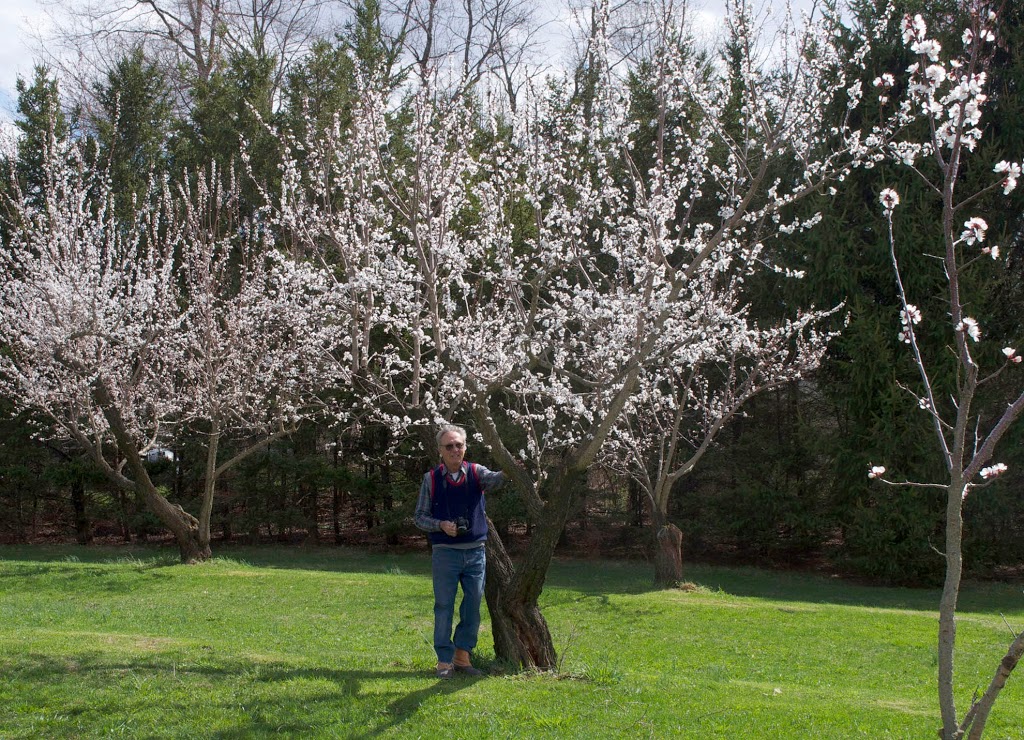
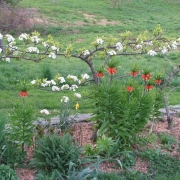
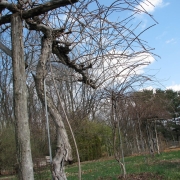
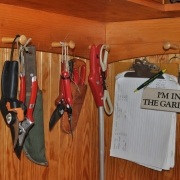
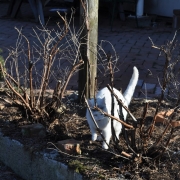
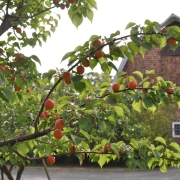



The most successful fruits here in my neighborhood are citrus (tangerines, lemons, oranges, grapefruit), avocado, and loquats. I can walk 50 yards in any direction and run in to at least one tree of each and as long as the branches hang over the sidewalk, the fruit is free game! I plan on growing some alpine strawberries in some pots this summer. I’m located in Van Nuys, CA and hope to win your book. I got a copy from the library and much prefer it to other books on the subject. I also liked Uncommon Fruits – very well written. Love the added historical contexts and flavor descriptions. Cheers!
Figs are the best fruit in my garden. Brown Turkey and a small green fig I do not know the name of, but delicious. I garden in N. CA.
So far raspberries have been the most successful fruit for me. That is mostly because I planted most of my berry bushes and fruit trees last year! I planted raspberries, blueberries, apples, peaches, pears, sea buckthorn, and sweet and sour cherries. The least successful have been my paw paw trees, which I started from seed 3 years ago and are now all dead. I think I may have waited too long to transplant them out of the pot and the roots got too cold. I live in western PA. I think it is so neat that you have started a bonsai tree! I would love to try growing one eventually too 🙂
I’m just starting my garden, I moved into my house a year and a half ago, so only know what I’ve planted, not what is actually successful. I have a collection of berries (blueberries, strawberries, blackberries, raspberries), I’ve also joined in the foolishness of planting an apricot tree, but feel that the tree is beautiful even if the fruit production is sporadic. I also have a peach tree. This spring I’ll be planting two pawpaws, some bush cherries, some honeyberries/edible honeysuckle, a nectarine, and another peach.
My garden is in the District of Columbia.
The only fruit tree we have here in Walker, LA is a satsuma tree. It’s still young, but is doing well and hopefully will bear fruit in another year. Would love a copy of your book. Thanks for the great posts and gardening advice.
I have many fruits but not many years growing. A very young blueberry bush, some blackberry brambles, a new kiwi vine, a service berry tree (the birds will win), strawberries, newly planted raspberries. The wild grapes grow wonderfully (for the birds). I am in upstate NY close to Canada Z4. I just acquired your pruning book and would love another Lee Reich volume to add to my library – especially one that would be helpful in growing edibles. I want to try a honeyberry.
I’m growing blueberries, currants ‘Blanka’, ‘Rovada’, ‘Pink Champagne’, ‘Tatiana’, raspberries ‘Kiwi Gold’, Lonicera ‘Blue Velvet’ and ‘Blue Moon’, hearty kiwi, and bush cherries Prunus jacquermonti x japonica ‘Joy’ and ‘Joel’.
There are several in the running for least successful: the black currant Tatiana bloomed heavily but never set any fruit so I ripped it out. My pH is over 7. Even with sulfur the blueberries barely survive and should be either ripped out or put in pots. The male kiwi has barely bloomed in the years since the two females started blooming so I’m lucky to get 1-2 cups of fruit. In terms of effort for results the kiwis are the worst. Last year both Lonicera blossomed heavily but the bloom periods overlapped by only 1-2 days. If they set any fruit I never saw them.
The successful fruits are the raspberries, bush cherries, and Ribes rubrum.
I’m 20 miles from you, in Poughkeepsie, NY and I’d love to put your new book next to my copy of Uncommon Fruits.
Location: Atlanta, GA (Zone 8a)
Grows well in my yard: Red Latham Raspberries (in shade), Bush Cherries (Jan, Joel), Juneberries (Downy Juneberry is a common street planting here), Southern Highbush Blueberries, Plum (moderately troublesome w/r/t spray schedule), Peach (crazy troublesome), Nectarine (troublesome spray schedule), Figs
Grows well in our neighborhood fruit garden: Asian and NA persimmons (trouble-free, except for squirrels), Elderberries, Pears
Didn’t grow well for me: Tree cherries (total disaster), gooseberries (also), currants (ditto), tender pomegranate
Anne Yellow Raspberry is the superstar in the my roof garden. Totally delicious, ignored by the birds, and was still fruiting at the beginning of November here in MA! The Niagara grape vine also gave us about 70lbs of grapes last year, so it’s no slacker either but I didn’t realize it has seeds when I bought it so I don’t love it for fresh eating. Conversely I’ve had terrible luck with blueberries. The poor things just sat there so I finally took them out. Space is precious on a roof!
I have great success with bush cherries, apricots, pears, plums, raspberries, blackberries, strawberries, nectarines and peaches. Hardy kiwi, grapes, and currants have been less productive. This year I am going to add goji, honeyberry, saskatoon, jostaberry, quince, pomegranate and fig. I garden in Z7 in Utah on a granite mountainside.
Peaches are the best fruit to grow here.
theresa n
weceno(at)yahoo(dot)com
I grow many fruits but many are relatively new to me. For sheer ease (ZERO attention), I have super luck with my ‘Jan’ bush cherries. They make the best jam. My peach and pear trees fruit heavily but the stinkin’ squirrels beat me to them A LOT. Frustrating little bleepity bleep bleeps. Zero luck with blueberries. Just not been able to keep them happy. I’m in Tulsa, OK.
Here in Western MI, blueberries do very well. Though I’ve wanted to plant a fig tree for some time, I worry that it won’t do well in the harsh winters. I’ve mostly grown veggies but would like to try espaliered trees for my potager.
most successful: everbearing strawberries
least successful: honeydew melons
im in Los Angeles, CA
I’m in southern Maine, and while my fruit trees are still immature, the berries are doing well. The raspberry bramble I put in last season actually yielded for me, primarily the ever-bearing. Strawberries do quite well as long as they are kept warm and dry. I actually lay small stones among them after the spring feed and check-up to hold heat and keep foliage drier. This neighborhood is loaded with mature white pines and open areas that have been cleared, and these open spots are loaded with wild blackberries up to 6 feet high. My apple, pear and plum trees seem happy and healthy, but they are only 2 years old and are not bearing yet.
Here in my SE PA backyard I had success with : blueberries, strawberries, blackberries, red raspberries, red & black currants, brown turkey fig, Liberty apples.
Waiting for success: hardy kiwi, granny smith & pink lady apples, natal beach plums.
I’m also in SE PA. I’ve had good luck with red and black raspberries and sour cherries. They reliably bear every year. My asian pears grow very well but could only be considered successful if you’re a squirrel. They steal every single one. I also have a large fig tree that hasn’t managed to bear anything in 5 years. I think I need a different variety.
Hi, I lived in Louisiana for 17 years and grew Meyer Lemons that were the size of Grapefruit. I now live in upstate NY and have to learn what grows and doesn’t grow. Being from Germany I want to grow cherries and European plum.
In Western NY I get great crops of blueberries. I also get good crops of apples, if they can survive spring frosts. I’ve had a hard time growing Strawberries without pests eating most of my crops, and hardy kiwi has a hard time dealing with our erratic spring weather.
I live in south-central Ohio, zone 6a and I’ve had my little home orchard for 3 years now. What has been most successful for me are my blackberries (triple crown and ouachita). Only been in the ground for 2 years and I had a bumper crop last year. My little patch of ozark beauty strawberries have been neglected and still produced like crazy last year. I have about 15 different varieties of American and European gooseberries and a few currants. They were all planted last year and I just planted 4 more gooseberries today (Leveller, Langley Gage, Hoenig’s Earliest and Whitesmith). My plums (Stanley, Italian Prune, Satsuma and Santa Rosa) have all grown well but have not yet produced fruit; same for my Pixie Crunch and McIntosh apple. I also have seaberries, elder, juneberry, fig, cornelian cherry, Nanking cherry, paw paw, Japanese quince, blueberry, raspberry, and goumi, all planted last year and all are doing well.
My biggest failure so far would be my sour cherries. Planted them 3 years ago and they always seem to be plagued by leaf spot and black knot until I spray like crazy and saw them back. I’m going to remove both of them this year and replace them with a jostaberry and black currant.
My Golden Delicious apple I planted 3 years ago is barely bigger than it was the day I planted it. It’s been pruned by the local deer population a few times and always gets hit by apple aphids and powdery mildew. It’s been fenced in and I plan on spraying a combo of fungicide and insecticide to control these problems.
Finally, my quickest failure was maypop. I planted 2 of them in spring 2 years ago and they never came back the following spring. My assumption is that I didn’t mulch them enough to protect from the cold.
Hello, I realize this post is quite old but I am also from central Ohio and found this post because I am trying to track down a start of a Hoenig’s Earliest gooseberry. Would you mind letting me know where you got yours if you happen to see this?
I got it from a gooseberry enthusiast, now deceased, many, many years ago.
Here in Syracuse, NY, on a drumlin with highly buffered soil, cornelian cherries are the best no-effort producers, followed closely by thornless blackberries. Blueberries are the worst, but I will never give up on them.
As far as most fruit with least effort, red raspberries are far and away the most successful. Hardy kiwi has been doing well, although production is spotty. Grapes and serviceberries are also relatively easy. My goumi has been loaded for the last two years. One bush provides far more fruit than we can eat fresh.
My fruit trees are still fairly young (3-7 years old), but so far the quince is the most productive and easiest. Blooms late and misses frost, and although about half the fruit is hideously deformed by insect damage, they are so hard that they keep great still and we just cut out the bad. I’m eagerly awaiting more production on my asian pears, because the one fruit I’ve gotten so far was heavenly.
Stinkers? Honeyberries are easy, but production has been very light. I’ve also struggled with Ribes and paw paw, I think because our soil is too dry. I’ve had figs in pots, but they are a pain, the breba crop always gets frosted, and the later crop rarely ripens fully.
Hi Lee! We’re in Southeast CT and am having a dickens of a time with thornless boysenberries from San Diego. Problem is we are away when they fruit and I’m too soft to remove excess canes. Berries small as result, I think. Excited by indoor/outdoor Meyer lemon crop this year and first figs on my 3-year-old indoor/outdoor fig tree. New to New England from lush Southern California paradise, so looking forward to learning how to grow fruit here, from you!
Living in Decatur, GA, I have successfully grown Heritage Raspberries, Sunshine Blue Blueberries and Brown Turkey Figs. I recently bought a Pineapple Guava but it did not make it through this winter.
Central PA: Blueberries and strawberries have been the best yielding if netted from the birds and squirrels. Fruit trees are struggling with damp weather and various diseases. I need to develop a spray plan that might help.
Peaches and Raspberries were the highlights from my yard in CT this past season. I had no idea the peach tree was even ready to fruit which made it an added bonus!
Here in mid-Michigan pawpaws, american persimmons, and hardy kiwi grow well for me with little care on my part except for pruning the hardy kiwi.
TV
Apples win out in my central NY garden followed closely by raspberries. I’ve tried growing blueberries for many years without success, will try again this year with your advice tips. Thanks
Southern Tier of New York (Painted Post) near the Pennsylvania border. We have older plantings of grapes, apples, blueberries, blackberries, and pears. Last summer we added two crab apple and two peach trees.
We seem to have the most success with the blueberries (5 bushes, 34 quarts last year) and the blackberries. Last year was a bumper crop for the apples, but in other years they have been hit with a heavy frost at blossom time.
Here in South Central PA I’ve had gratifyingly huge crops of black, red and black raspberries, and strawberries (I have several varieties to extend the season.) We enjoy them fresh in season and frozen all year long. Now that I’ve learned that oak leaves and pine needles do NOT acidify the soil, my blueberries are coming along, and I hope for a bountiful harvest this year. Lots of baby fruit trees growing – apples, peaches plums (I know your advice, but just can’t resist them), and some pears. I hope to plant pawpaws, persimmons and some others of your “Uncommon Fruits” soon – I have Nanking cherry seeds stratifying in the fridge. And then there’s that hardy pomegranate I got from Bass Samaan, I hope it survived this past winter.
I’m in Illinois and serviceberries grow well. Apple and apricots not so well.
On our KY farm, I would say that, so far, my Stanley plum and Nanking cherries are doing the best. However, they are still young, so I haven’t gotten any fruit from them yet. It is hard to say which fruits have done the worst, but I am going to go with goji berries and gooseberries.
Thank you for doing this giveaway. I have enjoyed your writings.
in central NJ about 20 min from the coast. Peaches grow well so I’ve also bought a nectarine to put in this year. Raspberries are pretty trouble free too. Can’t seem to get my persimmon seeds started.
I am in North CA and so far, the fruits I have struggled with growing are Pear, Cherry, Blueberry and Guava. I have 20 fruit trees in my garden – various types of citrus plants, stone fruits, and other semi-exotic fruits – jujubi, pomegranate, komquat, asian pear fuyu persimmon are all prolific producers but those 4 fruits have been struggle to even get them well established. Enjoyed your farmden pictures and postings.